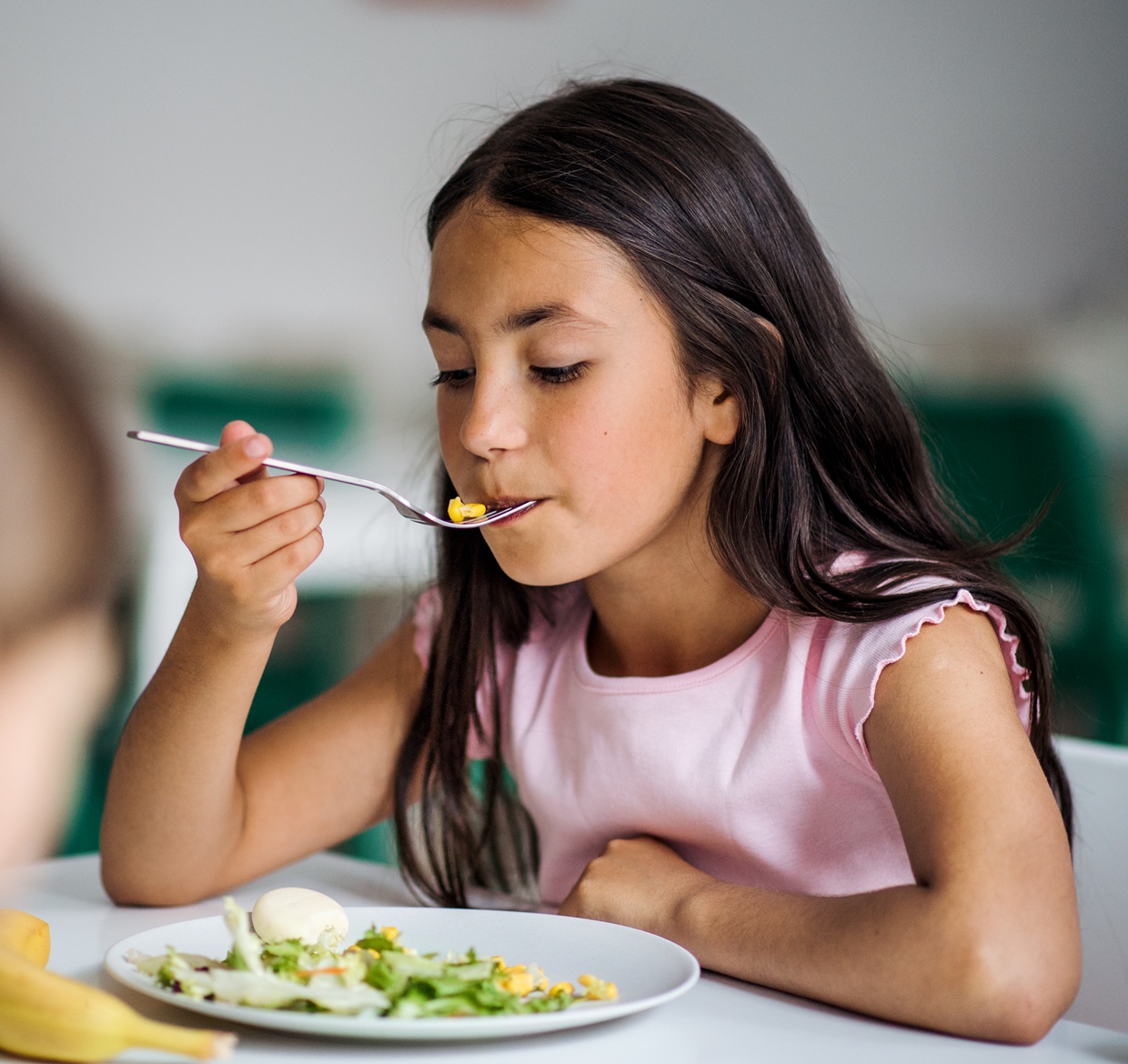- Home
- About Us
- Food Security Projects
- News
Alternative Breakfast Models
Second Chance Breakfast

The Second Chance Breakfast program provides an opportunity for students to eat a nutritious meal later in the morning, typically during morning break or between classes.
Second Chance Breakfast aims to reach students who may have missed breakfast before the start of the school day due to various reasons. Schools often offer a streamlined service, such as grab-and-go options or breakfast carts stationed in common areas, to make it convenient for students to access meals during the second chance opportunity.

Evidence for Use
+
-
Utilizing second chance breakfast increased breakfast participation among students and allowed schools to serve, on average, 58% of students qualifying for free or reduced-price meals.1, 2 Second chance breakfast, while potentially beneficial to all students, has been found to be particularly helpful to students who arrive by bus.3
Implementation Process
+
-
Implementing an effective Second Chance Breakfast program involves several key steps. The first step is to engage a diverse group of stakeholders, including students, staff, and parents, to ensure the needs of all parties are met. Then, assess the school’s schedule and identify a suitable time slot for offering breakfast later in the day, such as during a morning break or between classes. Next, determine the most convenient and accessible locations for students to access breakfast, considering options like grab-and-go stations or mobile carts in high-traffic areas. Streamline logistics by employing efficient serving methods. Promote the Second Chance Breakfast program through various channels to raise awareness among students, parents, and staff, emphasizing its benefits for academic performance and well-being. Continuously evaluate the program’s effectiveness through student feedback and data on participation rates, meal preferences, and impact on student outcomes,adjusting as needed to optimize success.
Best Practices
+
-
- Time second chance breakfast later in the morning so the greatest number of students can participate
- Locate breakfast pickup stations in high traffic areas such as hallways, common areas, or near classrooms
- Ensure quick and efficient distribution of breakfast items
- Provide easy-to-access garbage cans for students to throw away trash
Participating Schools
Many schools across California implement Second Chance Breakfast including:
Citations
1. School breakfast resources for school district and organization partners. No Kid Hungry California Website. https://state.nokidhungry.org/california/school-breakfast/. Updated 2024. Accessed April 11, 2024.
2.Yeh LB, Butt M, McDonnell ET. Alternative service methods associated with increased participation in the school breakfast program. The Journal of school health. 2023;93(3):226-234. https://onlinelibrary.wiley.com/doi/abs/10.1111/josh.13287. doi: 10.1111/josh.13287.
3. Grannon KY, Nanney MS, Wang Q, et al. Do high school students participate in second chance breakfast programs? The Journal of school health. 2020;90(2):119-126. https://onlinelibrary.wiley.com/doi/abs/10.1111/josh.12857. doi: 10.1111/josh.12857.
